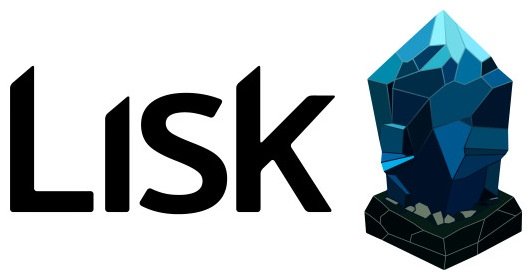
Although its history is not as long as Bitcoin’s, Ethereum (ETH) was the first cryptocurrency that operated beyond simple financial transactions. Created in 2015 by Vitalik Buterin, Ethereum has been functioning as a decentralized computer system geared towards processing and setting up smart contracts.
Since its launch, ETH has grown to become immensely popular and successful. It is one of the leading operating platforms for creating dApps, otherwise known as decentralized applications. Additionally, it is a valuable altcoin for cryptocurrency enthusiasts. Although the ETH price has taken a hit recently, many entities are predicting big upswings within the next year or two.
Despite Ethereum’s successes and benefits, it does have its downsides. For starters, the cryptocurrency lags behind in terms of efficiency and scalability. In addition, it currently operates on older algorithms and utilizes a complicated programming language.
These types of issues can make it easy for competitors to enter the market, which prompted many in the industry to begin seeking alternatives. Take a look at the following three cryptocurrencies that are good alternatives to Ethereum (in terms of their market cap).
Outline
- EOS
- NEO
- Lisk
- Final Thoughts
EOS
Market cap – $2 billion
Price – $2.38
24h volume – $739 million

EOS is an exciting crypto platform that would be a great alternative to Ethereum for anyone looking to invest. In fact, excitement for EOS is so high that some in the industry have even begun to dub EOS as the “Ethereum killer” because its developers specifically designed the platform to challenge Ethereum.
Remember when we mentioned that Ethereum struggles in the scalability department? EOS directly addresses this issue and prides itself on offering better scalability because of the platform’s Graphene technology. With this type of blockchain technology, EOS will likely have the ability to manage and process up to 100,000 transactions in a given second. Additionally, the creators of EOS plan on offering zero transaction fees to lure users and investors.
As if those benefits aren’t enough, EOS has the following:
- DPoS to prevent the creation of new blockchains while hard forks take place
- A legally binding constitution in place to settle community disputes
With advantages like these, it’s easy to see why EOS is amassing an impressive and excited community of supporters.
NEO
Market cap – $495 million
Price – $7.62
24h volume – $120 million

NEO is one more cryptocurrency growing in popularity. While nowhere near as mature as Ethereum, NEO focuses more on regulations. The platform’s developers understand that in order to become a widely used cryptocurrency, the blockchain platform has to be easy to regulate. Because of this, NEO uses the consensus algorithm known as the Delegated Byzantine Fault Tolerance. With this type of consensus algorithm, NEO operates with two different types of network nodes:
Regular Users
Specialized Bookkeeper Nodes
With this algorithm in place, bookkeeper nodes make and implement decisions when two-thirds agree. What makes this type of functioning algorithm so great compared to Ethereum is its speed. Additionally, it means the NEO blockchain can never fork, which is a particularly attractive feature for regulators. NEO also has a max of 10,000 transactions per second, while Ethereum’s rate is 15 per second.
It is also noteworthy that while Ethereum continues to develop in response to new demands from those who use it, the developers behind NEO created it to take care of future demands. Essentially, NEO uses similar technologies to Ethereum but in a way that sets it up to become the new smart economy. This goal of becoming the new smart economy is why the regulatory compliance previously mentioned is so important to NEO.
Lisk
Market cap – $139 million
Price – $1.22
24h volume – $3 million

Along with EOS, Lisk is another Ethereum-like project taking the industry by storm. This open-source platform allows developing and running smart contracts. For those who don’t know, smart contracts refer to a type of computer protocol that developers use to digitally and automatically enforce transaction contracts.
It’s important to note that Lisk builds on what Buterin started with his Ethereum project. However, Lisk differs from Ethereum in that it uses a different programming language. As previously mentioned, Ethereum’s programming language is complex. This is true to the point that many developers don’t even know it, which means using Ethereum has a steep learning curve. That, in turn, means that finding reliable, skilled developers can be hard. Lisk, on the other hand, uses JavaScript as this is the most commonly used programming language in existence today. There is no learning curve for developers who want to use Lisk, therefore it’s easier for programmers to immerse themselves in the project.
Additionally, Lisk’s consensus algorithm improves upon that of Ethereum. It uses Delegated Proof of Stake (DPoS). When the program needs an upgrade or change, the entire network of individuals involved in Lisk does not have to gather to cast a vote. Instead, about a hundred “delegates” are responsible for deciding changes. As a result, there are no long waiting periods during decision-making, and all the necessary upgrades and changes are implemented much faster.
Despite these benefits and the growing popularity, experts cannot deny the fact that it isn’t as mature or developed as Bitcoin or Ethereum. Be that as it may, Lisk does show promise and has the ability to become the next big thing in the crypto industry.
Final Thoughts

One thing is certain: This is an exciting time for cryptocurrencies.



I have been looking at Lisk for staking, what I didn't realize is it uses JS for programming. Makes me want to take a much harder look, especially now that I can easily get it in my Exodus wallet now in one of the later updates. I recently 'reinvested' my NEO into some LTC mining hardware, which has already made more returns than NEO's GAS, lol. Got tired of the blockchain freezing. Thanks for the article. Now that we have Steem-Engine, I am really hoping that STEEM can become a true competitor as well in the future.
I find that ETH, having the highest market value of any crypto besides BTC, and lacking the latter's security flaws, provides the best measure of the state of the crypto market.
Posted using Partiko Android